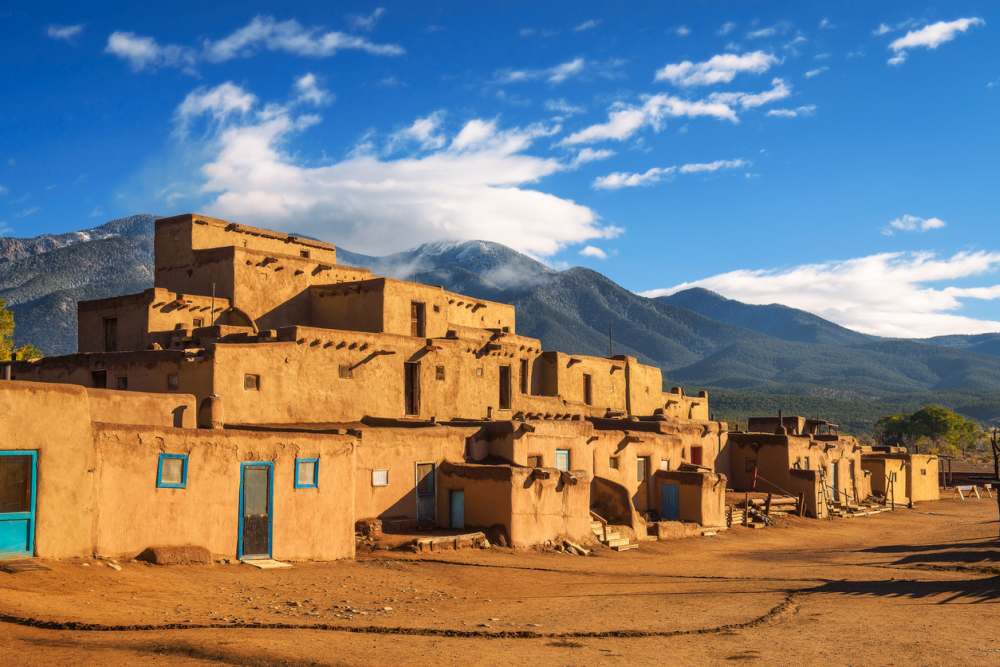The adobe house, with its distinctive earthen construction, holds a special place in architectural history. Originating thousands of years ago, these homes are among the oldest types of buildings, crafted from a simple yet enduring mixture of mud and straw.
This article takes a closer look at the journey of adobe houses from ancient times to their modern incarnations. As we trace their evolution, we uncover how these structures have withstood the test of time, adapting to various climates and cultures while maintaining their charm and sustainability.
The Beginnings of the Adobe House
The story of the adobe house began thousands of years ago, rooted in some of the earliest human settlements. Adobe, a building material made from earth, water, and organic materials like straw or dung, was one of the first to be used by humans for constructing durable, weather-resistant homes. This method of building originated in regions where wood and stone were scarce but where clay-rich soil was abundant, making it an ideal and accessible choice for shelter.
The use of adobe can be traced back to ancient civilizations across the globe, from the Middle East to North Africa, and particularly in the pre-Columbian Americas. In these regions, communities discovered that sun-dried bricks made from mud and straw not only provided excellent insulation against both heat and cold but also had the strength to stand for generations.
These early adobe homes were simple, typically consisting of a single room with a flat roof that could support the weight of the mud-brick walls. Over time, as construction techniques evolved, adobe houses became more complex, often featuring multiple rooms, courtyards, and decorative elements.
The Adobe House’s Early Evolution
Following its early development, the adobe house continued to evolve, adapting to the changing needs and technologies of its inhabitants while maintaining its core principles of sustainability and natural materials. After its spread across the Middle East, North Africa, and into Spain, the adobe technique was brought to the Americas by Spanish settlers in the late 16th and early 17th centuries. It quickly became a staple in the construction of missions, forts, and homes, particularly in what is now the southwestern United States and Mexico.
In regions like New Mexico and Arizona, the adobe house underwent further innovation, incorporating influences from Native American, Spanish, and eventually American architectural styles. The 19th century saw a resurgence in adobe construction as part of the Pueblo Revival architectural movement, which sought to preserve and celebrate the traditional Pueblo architectural elements, including flat roofs, rounded corners, and exposed wooden ceiling beams known as vigas.
The Adobe House in the 20th Century
The 20th century marked a period of significant evolution for the adobe house, blending traditional methods with modern innovations to meet the era’s changing demands. Early in the century, the aesthetic and functional appeal of adobe houses were rejuvenated through the Pueblo Revival architectural movement, particularly in the American Southwest. This movement, gaining momentum in the 1920s and 1930s, celebrated the historical and cultural significance of adobe construction, emphasizing its indigenous roots and environmental adaptability. Architects and builders began to revive and reinterpret traditional Pueblo designs for contemporary use, creating structures that were both nostalgic and suited to modern living.
However, the widespread adoption of adobe faced challenges, especially regarding building codes and standards that favored more modern construction materials and methods. Concerns over the structural stability of adobe in regions prone to earthquakes and the material’s vulnerability to water damage led to innovations in the mid to late 20th century. Builders started incorporating steel reinforcement, concrete foundations, and advanced waterproofing techniques to enhance the durability and safety of adobe structures without compromising their thermal efficiency and aesthetic qualities.
Despite these hurdles, interest in adobe as an eco-friendly building option surged during the environmental movement of the 1970s, aligning with growing awareness of sustainability and natural resource conservation. This period saw a revival of adobe construction techniques, including the development of “stabilized adobe,” which added cement or asphalt emulsions to the traditional mud and straw mix to improve weather resistance and strength.
The Modern Adobe House
In the modern era, the adobe house has experienced a resurgence, propelled by a growing commitment to sustainable living and green building practices. As the world grapples with climate change and environmental degradation, the intrinsic values of adobe construction—energy efficiency, use of natural materials, and thermal mass—have garnered renewed attention. This revival is not just a nod to nostalgia but a forward-looking embrace of adobe’s potential to contribute to eco-friendly and sustainable architecture.
The 21st century has seen architects and builders innovate within the adobe tradition, integrating contemporary technologies with time-tested techniques. Modern adobe homes often feature solar panels, rainwater harvesting systems, and advanced insulation methods, enhancing their environmental performance without sacrificing their aesthetic appeal or thermal comfort. These advancements have made adobe houses more appealing to a broader audience, extending beyond the American Southwest to various parts of the world seeking sustainable housing solutions.
Significant events, such as the green building movement and the push towards zero-energy homes, have spotlighted adobe construction as a viable and attractive option. Organizations and communities dedicated to sustainable building practices have promoted the use of adobe, citing its low carbon footprint and the relatively low cost of materials. Workshops and educational programs aimed at teaching adobe construction techniques have proliferated, empowering individuals to build their own environmentally friendly homes.
Moreover, the modern era has witnessed the incorporation of adobe in luxury home designs, proving that sustainability and elegance can coexist. High-end adobe homes, equipped with modern amenities and designed with a keen eye for detail, have challenged the misconception of adobe as merely rudimentary or rustic.
Conclusion
Traversing through centuries and across continents, adobe construction has proven its worth by standing the test of time, offering shelter, comfort, and a connection to the earth. In recent years, the revival of adobe houses, especially in the context of the 21st-century environmental movement, highlights a collective yearning for building practices that honor the planet while providing for human needs. As we look to the future, the adobe house stands as a beacon of sustainable architecture, reminding us of the wisdom inherent in traditional building methods while encouraging adaptation and innovation.





